All-Season Container Gardening Department
Container gardening continues to be the most promising product for both profits and branding for the independent garden center. A classic marketing opportunity, container gardening can increase:
- the number of customers shopping in a garden center,
- the number of times a customer shops and
- the average sale.
The creation of a branded department for container gardening is the very definition of branding taking a commodity and giving it personality and promise. Let’s take each of these three marketing components more customers, more often, higher average sale and evaluate the potential impact of container gardening on each one.
Increasing the number of customers has been the greatest challenge for retailers; the number of customers shopping the store has flattened, and many independents have focused more attention on higher average sale to compensate. Researchers and industry pundits have offered a number of reasons for this stagnation in customer numbers: a finite and aging baby boomer customer base, failure to entice generation X into gardening, the time-starved 30-something, later age of marriage and home ownership, even the boom in condominium sales and apartment living over home ownership. All of these factors have contributed in complicated ways to a decline in the number of customers coming through the door of garden centers.
I suggest that garden centers have contributed to this decline as well. We have persisted in offering customers a complicated product group (“Is it a perennial or an annual, sun or shade, drought tolerant, etc.?”), product perceived as capricious (“I watered it just like you said, but it died!”) and time consuming (“You mean I have to dig holes and put in something called amendments?”). It’s no wonder consumers, uninitiated into the secret handshake of the gardener, turn to less complicated pursuits such as creating garden rooms with furniture and outdoor kitchens. And for the garden center that bemoans the consumer’s lack of spending on plants, these products suggest quite a different scenario. The consumer is certainly willing to invest in outdoor décor that is easy and adds to the home’s entertainment “cocoon.” What product better fits this category of high-end, easy-to-use outdoor accessory than container gardening?
Marketing 101
Getting the existing customer to shop more often is a much less expensive marketing objective than adding new customers. A database of customers, whether maintained on a sophisticated electronic system or entered manually into a simple program that prints labels, is the key component to inviting the customer into the store during all selling seasons. Frequent buyer programs, promotions that offer “play money” to return to the store after the spring season, and special events built around specialty products for summer and fall have been very effective promotion techniques for many garden centers. Even with all these shopping incentives, obstacles to the consumer’s interest in gardening after the excitement of spring have proven formidable.
Consumers are often reticent to invest resources in gardening during the summer and fall because the time until plants are killed or go dormant is shorter. Summer heat makes just being in the garden less pleasant and offers enticing alternatives to gardening travel, outdoor sports, family activities, etc. Fall is much the same back to school, back to routine and looming winter. Once again, I suggest garden centers are guilty of compounding the summer/fall gardening obstacles. There must be something in the store during the summer and fall selling seasons that meets the customer’s expectations.
Many garden centers are poorly stocked and poorly staffed during these Á selling seasons. Customers who do brave the summer heat to look for plants often find empty benches and inattentive help. There remains a major psychological obstacle in the industry that the season is over after six frantic weeks. That philosophy tends to be self-fulfilling at the store level.
For growers, the mixed containers can serve to recycle unsold spring plant material as opposed to dumping product at reduced or no profit. For retailers, pre-finished mixed containers and the larger plant material necessary to create them at the store level offer the opportunity to fully stock the store at reduced inventory levels; it takes fewer 6-inch pots and large mixed pots to fill benches than the flats and 4-inch material so important to spring sales, so the store looks full even with less inventory. Container gardening can entice the consumer to return to the store for easy garden refreshment during the summer months when digging in the dirt may be less desirable but entertaining outdoors is more important. The container gardening department becomes a signature, promotable product for retailers. As some retailers are discovering, growers can even be convinced to grow specialty container mixes available exclusively at your store, once again creating a signature, promotable product.
Finally, the opportunity for add-on sales is inherent in container gardening. First of all, the pot is crucial, so the sale is immediately enhanced. For the container gardening department, pots should be no smaller than 12 inches. This decision has far-reaching consequences for repeat business. What this choice amounts to is selling a refillable container that can be the basis for product selection and promotion in all selling seasons. In addition, shifting the consumer from in-ground gardening to container gardening also shifts the consumer’s perception of the product. I have no research to back this up (yet!), but I strongly suspect container gardening changes the product into a consumable, much like cut flowers. The consumer’s expectations of product longevity are markedly limited as compared to in-ground gardening. Even a small specimen tree or a shrub that may serve as the year-round basis for seasonal color changes is seen as part of a consumable product. The effect is to make summer and fall product additions less difficult to accept. The consumer understands the container is useful for a few months and is designed to be changed for summer, fall and even holiday and winter interest.
But enough psychology; let’s get back to add-on sales. The consumer needs one container no more than she needs one plant to go in the ground. The opportunity for multiple large containers is enhanced with the availability of high-end containers in a variety of styles. In addition to the container, the product mix calls for multiple plants from all product categories small trees, shrubs, perennials and annuals. This mix forever erases the traditional product categories of the past. We’ll discuss just how to offer shrubs, perennials and annuals in a unified store presentation in just a moment. Other essentials for container gardening include potting soil, amendments, a trowel and pruners. The one tool the container gardener does not need is a shovel. The container effectively creates a “raised bed” filled with perfect soil for the time-starved consumer. (You might even include one of those signs showing a circle with a red slash through it over a shovel to proclaim ” No shovel gardening sold here.”) Other add-ons might include small garden art or decorative watering apparatus. The possibilities for these products are endless and should be approached with the same caution as all other “gifty” items. Remember, the purpose here is to sell plants in quantity in all selling seasons.
In addition to these marketing-based reasons for creating a container gardening department, this product category enjoys unlimited promotion from the gardening press. Every gardening magazine has a feature on great containers. Add to that the consumer support materials for container gardening from breeder/marketers and you have a market-ready product for a wide range of consumers.
The Obstacle
With container gardening serving so effectively as a marketing tool for independents, what’s the problem? Like many other issues for the independent garden center, the store is the obstacle what I call an “obstructure.” In most garden centers the products needed for successful container gardening are spread all over the store. Plants are in one department, pottery is in another, etc. Among the plants, the container mix is further divided into departments trees and shrubs, perennials and annuals. To accomplish a container garden for a customer, staff must handhold the customer all over the store. But, without these traditional plant category groupings, how could we water? How would we manage to buy products when the staff is so category specific? The perennial buyer knows little of annuals. And, the shrub department manager knows nothing about perennials.
To counter this traditional thinking, I invite you to visit an Apple store. No product is more confusing to the average consumer than the latest technology. Apple sales people can talk to both the techno-geek and the computer illiterate about everything in the store from computers to printers to iPods. How can plants be more confusing than computers? To further complicate the shopping experience, space to put all these products together into a package the customer can take home is often lacking, hidden or if visible, distinctively unappealing. Remember, the consumer’s single biggest complaint about garden centers is that they are dirty. Container gardening areas more often resemble a head house than a department store.
The Opportunity
The container gardening department offers the opportunity to sell multiple plants, high-margin containers, soils and amendments, decorative add-ons, watering cans, gloves, hand tools and most importantly, a unique category. And, this product can be offered in all selling seasons. The container gardening department has the potential to become the independent’s “Swoosh”. So, how do you execute at store level?
The key to creating a container gardening department can be found in the men’s shoe department at Nordstrom. That key is called double inventory. In the men’s shoe department shoes are displayed along the wall by use category sports shoes, dress shoes, lace-up, loafer, boat shoes, evening shoes. On tables in the center of the department, you will find the same shoes displayed by brand. The consumer can select either way. The key is, it’s the same merchandise making the department seem much more extensive while recognizing the duality of the consumer’s approach to selecting shoes. The staff is equally knowledgeable about brand and use categories.
Now, let’s transfer that concept to the garden center. Traditional shopping categories, based in the earliest grower/retailer plant production model (trees grow in a different environment than annuals and are therefore sold in a different area) can be maintained in the store. The difference is, we will double inventory products from each product category in the container gardening department. That means the manager of that department must be able to select compatible products from among all categories and put them together in consumer-based mixes. That means knowing how to order pre-finished products as well as knowing how to put together containers in the store from inventory.
The Details
This department is the perfect environment for Growing Places’ Mannequin Technique. Plants are grouped in consumer-usable collections with inventory directly adjacent to the display container. The customer can see all the components within easy shopping reach and can then choose among several options: buying a pre-made container in a traditional “plasticotta” pot at one price point, upgrading that container for a glazed or wooden container or selecting a container and creating a custom mix right there in the store.
Remember, the customer may have no place at home to work on a container without creating a big mess. You provide a place where she can leave the mess behind. Further, staff help can be an opportunity for add-on sales. Because the consumer knows so little about how to put plants together, she may buy too few plants or too small plants for her container. If she discovers this deficiency after she gets home, she may be disappointed but may not make another trip to the store to get more or larger plants; if she is creating the container in the store, she can easily upgrade to larger plants or select more plants to create the look she saw in her gardening magazine.
The container gardening department is organized for the consumer and the staff. A two-level counter is essential for working at traditional bench height (24-32 inches) and at a lower work counter (12 inches) for large containers. The “head house” pile of potting soil is replaced with a covered plastic container with wheels so it can be easily loaded with potting soil and moved around, yet a child can’t easily get at it to “play in the dirt.” The area is equipped with a broom and dustpan to clean up spills and fitted with water and a sink so containers can be watered and, more importantly, customers and staff can wash up afterward. If you sell soaps and creams, this a great place to encourage customer trial. A collection of large containers (12-inch and larger) is located in the department with individual containers arranged by color. Bags of potting soil and amendments are readily accessible for customers to purchase and use. In addition, products from this department require a designated cash register key or bar code in order to track sales and compare to other departments.

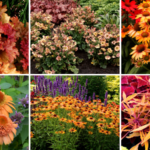
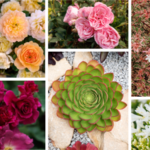
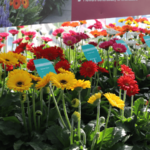


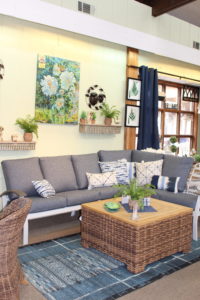
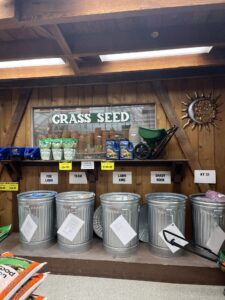
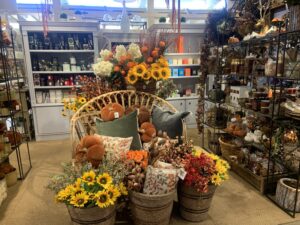
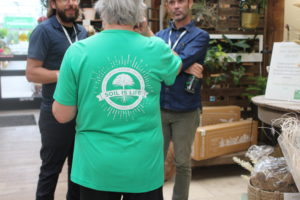
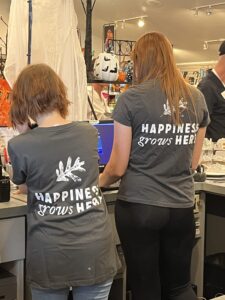
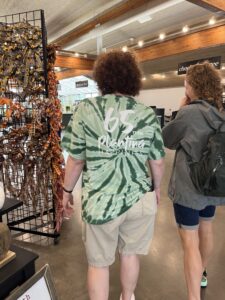
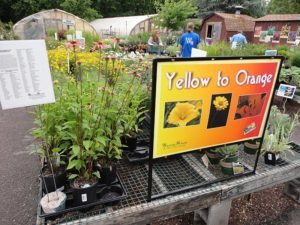
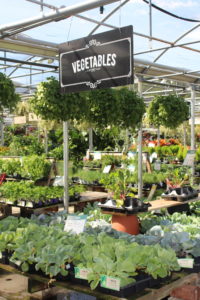
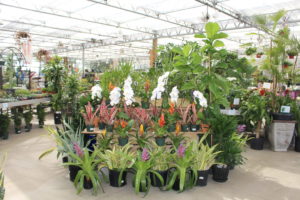


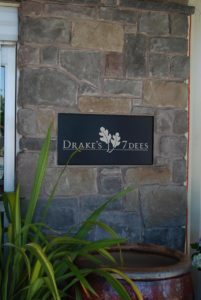
 Videos
Videos





